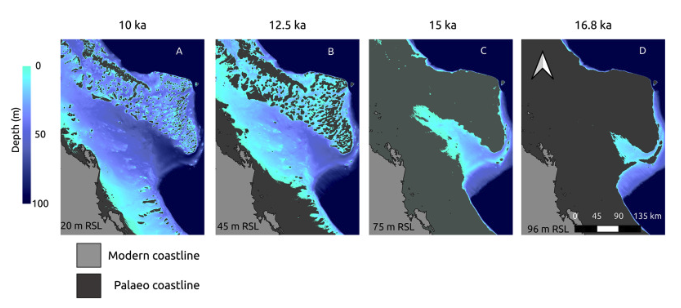
Relative sea-level changes can dramatically alter coastal geomorphology and coastlines, which, in turn, can fundamentally alter tidal regimes. The Great Barrier Reef (GBR) has undergone around 120 m of relative sea level (RSL) rise since the Last Glacial Maximum, ∼20,000 years ago (ka). Ooid grains (sand sized carbonate sediment) that formed in shallow water (>5 m depth) and under prolonged hydrodynamics forcing are now found at depth ranging between 100 and 120 m under the present day GBR Gulf of Capricorn. The apparent inconsistency between preferential conditions for their formation and the actual environment where they are found at present-day could be used to infer past regional hydrodynamic conditions. Here, we focus on the regional changes in the GBR tidal dynamics over the last 16.8 ka to show that sea-level rise on the GBR has caused significant changes on tidal patterns and dynamics. To do so, we used the first multi-scale palaeo-tidal finite element coastal tidal model of the GBR over five time slices (present day, ∼10 ka, ∼12 ka, ∼15 ka and 16.8 ka), representing the position of RSL at 0 m, 20 m, 45 m, 75 m and 96 m below present. We show that favourable conditions for ooid formation only existed for a short period of time between 16.8 and 11 ka. At that time, the Gulf of Capricorn was a wide shallow shelf with strong currents constantly agitating grains, providing rapid burial, exposure and re-burial cycles. We show that these conditions only existed for a short period of time and hence explain the presence of ooid grain formation in the GBR at that time. We propose ooids formed within the Capricorn Channel at a time of lower RSL than expected and then underwent sub-tidal transportation to their final deposition place via tidal currents, explaining the inconsistency with their age and the depth at which they were found.
![]()
